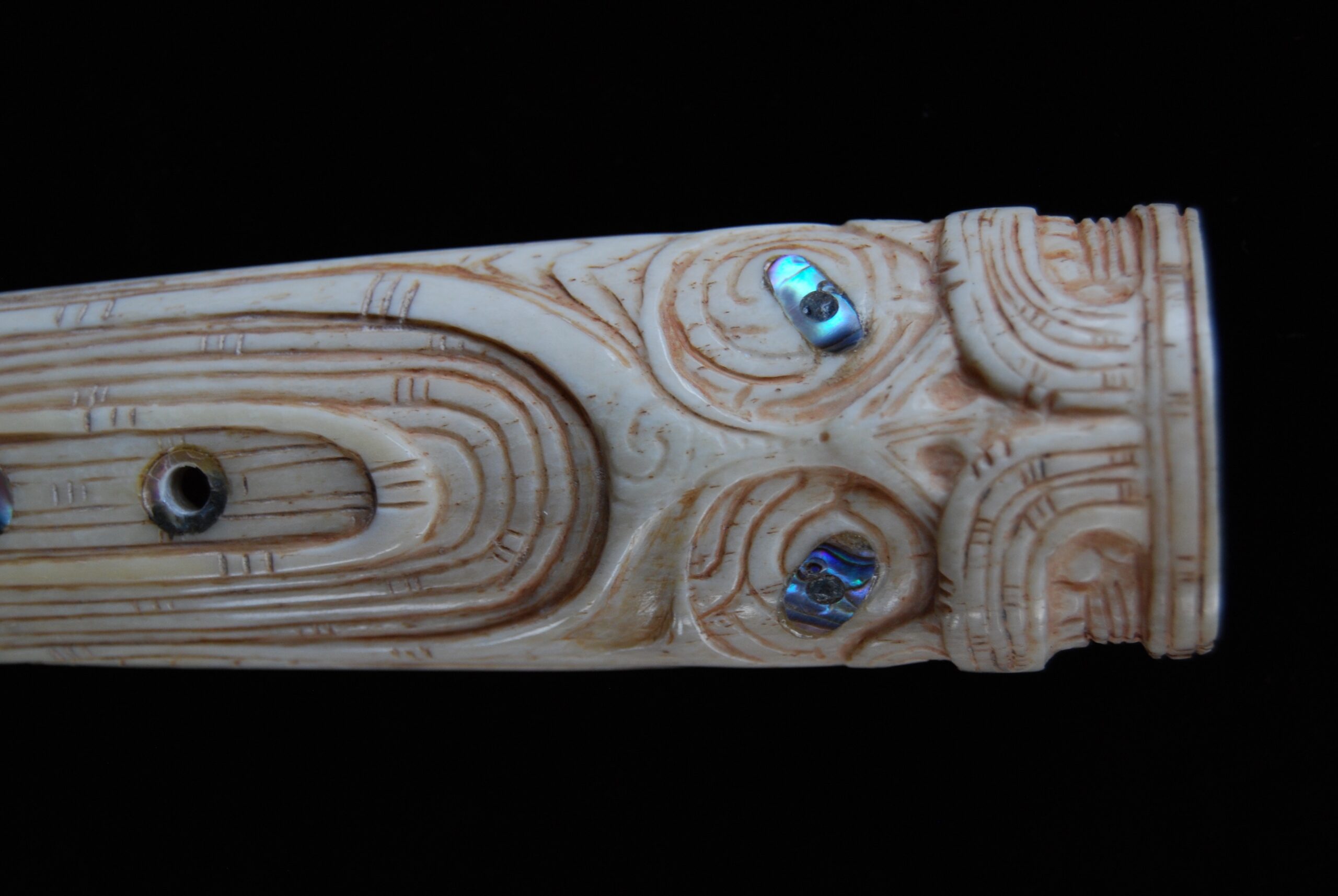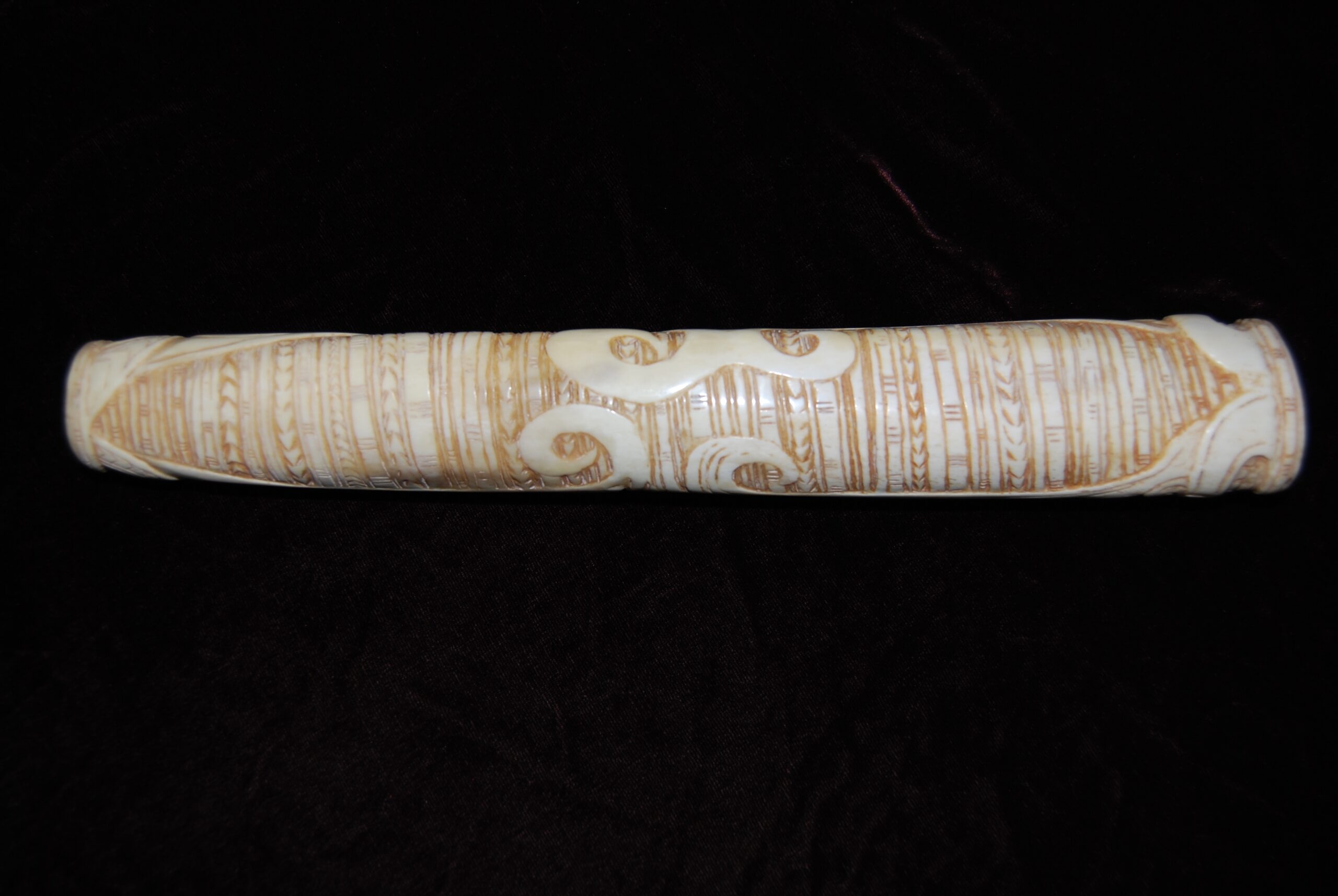Kōauau Tangi Mōteatea
Kōauau (Ostrich) bone flute. A treasure valued for its mournful cry. The Kōauau was sometimes made from the leg bone of an ancestor or deceased family member. Such kōauau were played during the labour of a woman to assist in easing her pain.
Kōauau were not played for recreation but like other Māori instruments were used to aid ceremony.
This kōauaua named Tangi Mōteatea means to cry whilst gasping. The word mōteatea is also a traditional form of waiata or Māori chant. Such chants played with the accompaniment of kōauau or other taonga pūoro (Māori musical instruments) create a state of trance. Tangi Mōteatea has three voices. The male voice akin to the bugle, The female voice which is the main sound of the flute, and the spirit voice of the child. Kōuauau and other "flute" instruments are based on the Pūtorino (the story of the pūriri moth). The male will give his life to the female (who eats him). She then weaves the cocoon in which forms the tūngoungou or caterpillar. This caterpillar was said to have such a sweet voice it became the preferred food of the Korimako, arguably the best singer of the forest.
Tangi Mōteatea offers a meditative release of our suppressed voice. The voice of love, of hurt, of alarm, of joy. Hours of attentive work have been given to creating this living work of art.



